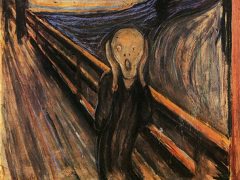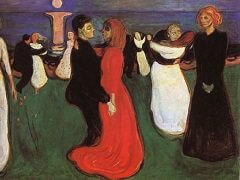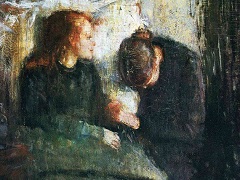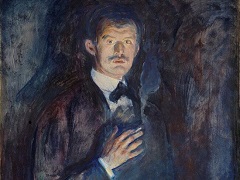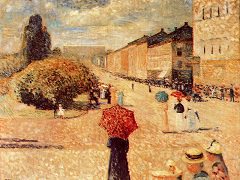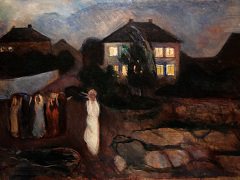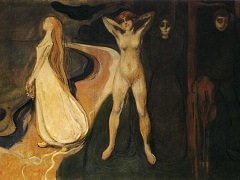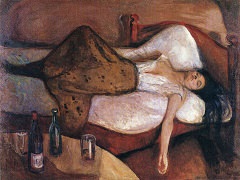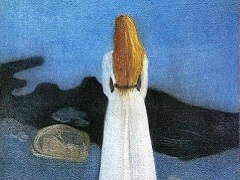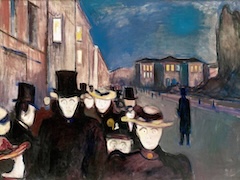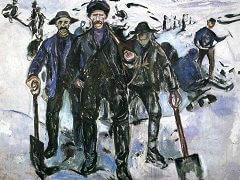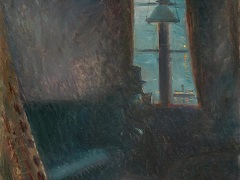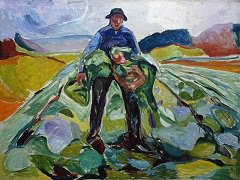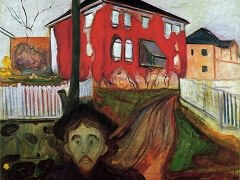Anxiety, 1894 by Edvard Munch

This painting draws on two earlier departures: the anxious humanity moving forward as if driven by ominous elemental forces, as first conceived in Evening on Karl Johan Street; and a certain view of Oslo Fjord, already seen in The Scream. Both were destined to recur with considerable fidelity in Anxiety and in other works of the same period.
Norwegian angst, like its German counterpart, had become the key term not only for Munch's central pictorial content but for the entire tradition that is traced to Kierkegaard's and Nietzsche's philosophies, Strindberg's and Ibsen's plays, and the North European modern aesthetic contribution in general.
In Anxiety Munch repeats closely many elements of The Scream. The same jetty that accommodated a single alienated personage appears again, as do the lake in the distance, the two boats, the church, and other structures that line the shore just a little less dimly than before. The are all quoted from the earlier work, as are the gloomy hues and the intense swirls of concentrically enlarging lines that define and ultimately embrace land, sea, and sky.
If, however, The Scream deals with the horror experienced in total isolation by a single being, Anxiety plays upon collective despair. the sentiment of angst in this work is even more sustained, if less piercing, than in The Scream, since its desperation is here borne by a group rather than by an isolated individual.
Munch returned to Anxiety two years later to restate the same motif through the print mediums. This time he added the woodcut to the lithograph and allowed the white features rendered visible in the subtractive method to stand against the expressive ground of a red-colored paper. As has been observed in the The Scream, the limitations inherent in the graphic technique - its reduction of the linear property and the elimination of the descriptive color in the woodcut - emphasize the abstract conception and heighten the emotive forcefulness of the pictorial content. The few but significant modifications and character substitutions that the artist felt compelled to undertake in the transformations from painting to prints, as well as the subtle differences between woodcuts and lithographs, provide valuable insights into Munch's creative reaction.

